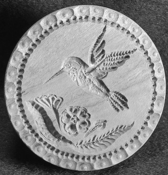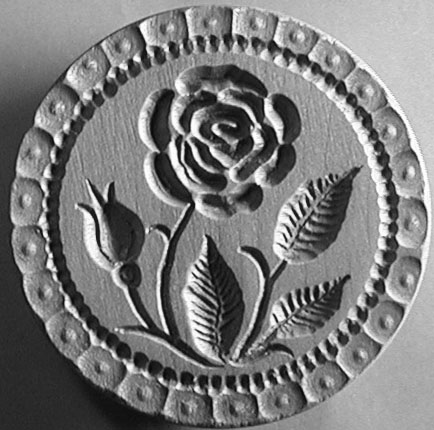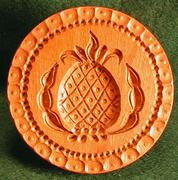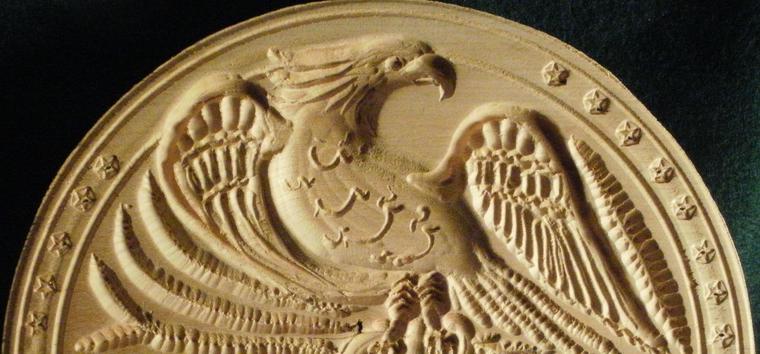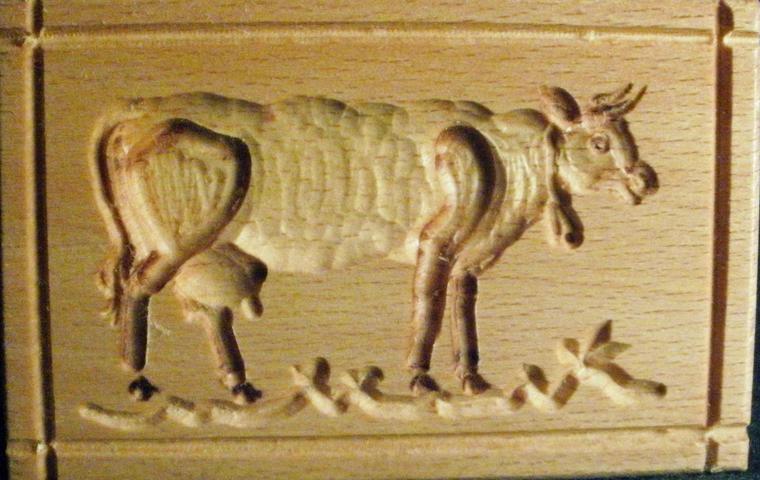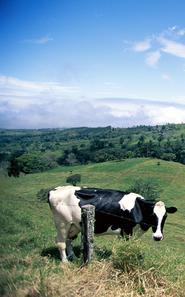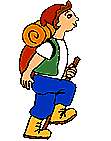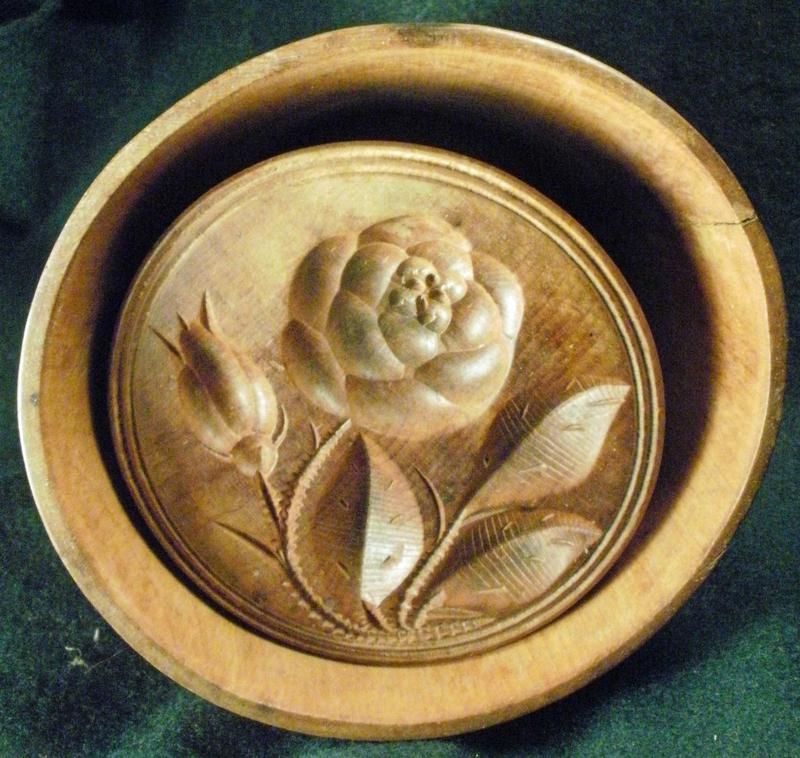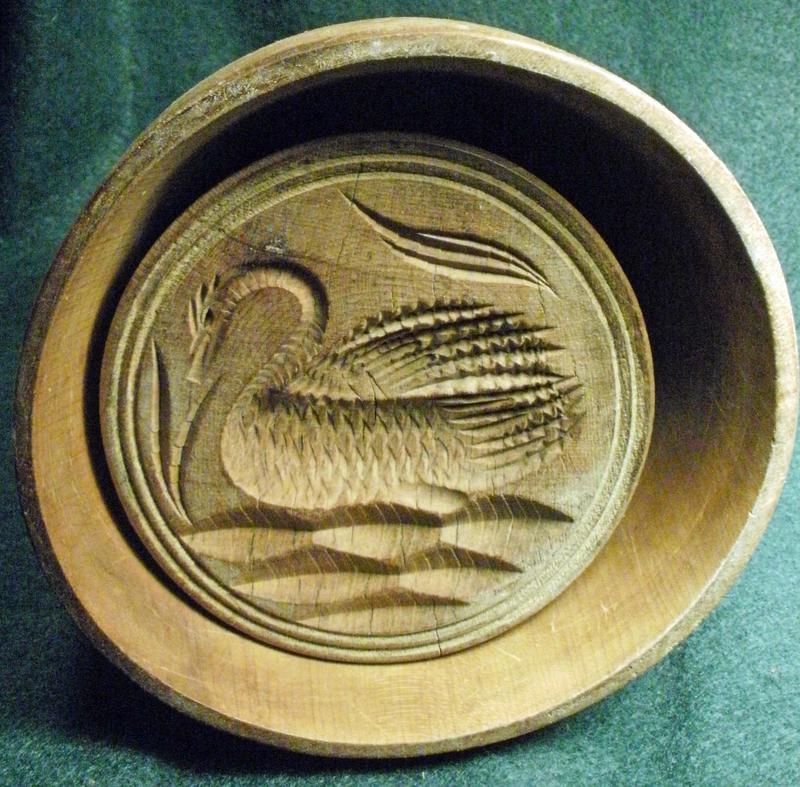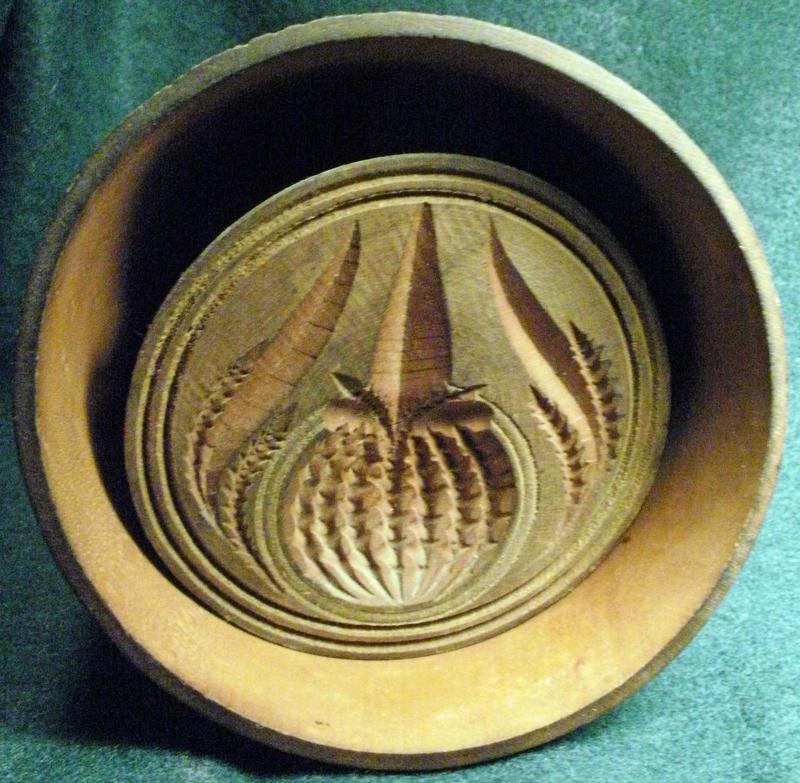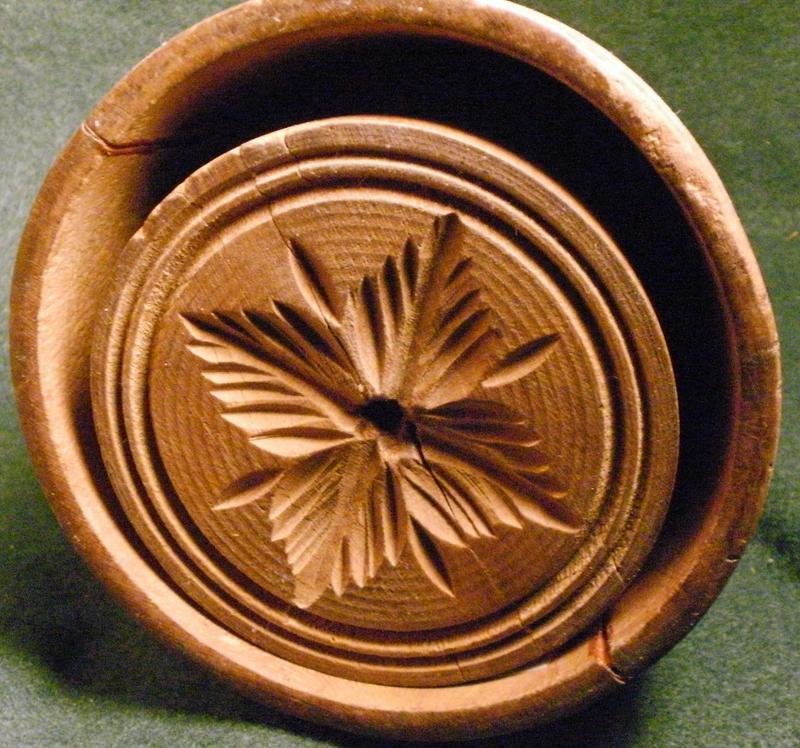3/24/08 from Caroyn C. who purchased #88: "Gene, I wanted to thank you... I made my own butter and the mold worked perfectly and was so beautiful. My family couldn't believe I made it. They also enjoyed the homemade biscuits I made from the buttermilk! Your work is wonderful and I really appreciate your craftsmanship. It's hard to find these days!"
A bit of butter mold history... Butter molds were first used centuries ago in northern Europe. Today, most of the oldest molds to found in museums date to the mid-18th century Europe and North America. In the 19th century, dairies became commercial and butter - as well as the wooden butter mold - was widely mass-produced. Antique molds of the late 19th and early 20th century are often found in personal collections. Antique American butter molds have, in the past forty years, become popular Americana collectibles and greatly increased in value. Such molds are - due to their condition - best used as decorative accent pieces.
It is as rare to find modern butter molds as it is to find someone who knows how to use them.
Instructions for use of a modern butter mold: 1 - Soak the mold in ice water for 30 minuutes and -if convenient - refrigerate the mold for 30 minutes more. This helps to keep the butter from sticking in the mold. 2 - Rinse the mold with cold water and fill it with softened butter. 3 - Smooth the surface with a spatula and cover with plastic wrap. 4- Chill for 2 hours or more.
5 - To unmold the butter, run the tip of a knife around the outside edge to loosen it.
Cleaning wooden molds: Use hot water, mild soap, and a brush to loosen residue - but do not soak the mold in water.
Reconditioning molds: Mineral oil may be used to recondition a mold and prevent drying and cracking. Vegetable oil should not be used.
Food professional teacher, Alice Ross, writes of butter making and molding (Hearth-to-Hearth, October 2000):
If you want to try it yourself, the trick in a successful casting is to first soak and chill the mold.
Then, after packing the butter in, refrigerate until firm, and then pop out into a plate.
If you want to make your own butter to match the handsome form, all you need is fresh whipping cream.
Whisk or beat past the whipped cream stage until the butterfat forms firm yellow lumps and separates
from the remaining buttermilk. (Save the buttermilk: let it sit out at room temperature overnight
to culture, and either drink it or use it in cooking.) Paddle and press the butter in several washes
of cold water until there are no traces of buttermilk left. Salt if desired.
Pack into soaked and chilled wooden molds, refrigerate to harden and then un-mold."
3/12/07: "I bought two of your butter molds several years ago (which I love!!!) ...to mold butter,
I usually freeze the molds for 30 minutes, and if the butter isn't too soft, then mold it immediately and the molded butter pops right out. If the butter is too soft, just throw it in the freezer for another 30 minutes.
I've never had any problem with the butter coming out with this technique!!" Rita Jansing
"We are a living history museum in Ohio portraying rural life in the 1860's.
Thank you for creating such accurate molds! Only the best past muster here, and once I saw your butter molds, I knew I had found a treasure.
When working in front of the public (as a housewife living her "life" in 1861),
I use the historic method for molding butter - a completely dry mold dusted with flour, and slightly chilled butter.
The butter comes out nicely 90% of the time.
It's worth a try. Thanks again for the beautiful craftmanship!"
Heather Faur, Hale Farm and Village, OH
3-3.5" Dia. Butter Stamps/knob handle ~Order without finish for stamping butter or with a food-safe "B" finish for other use.
#55 Cow $37
#49 Hummingbird $37
#52 Rose $37
#50 Pineapple $37
#54 Partridge $37

BUTTER STAMPS, USE OF BUTTERMOLDS
This page was last updated: July 1, 2021
HOBI Cookie Molds
Hand Carved Butter Prints
Hand Carved Butter Prints
PAGE
11
47
YEARS IN
BUSINESS
1974-2021
HINTS: It is necessary that the wooden mold is kept as cold as possible, Place the bowl with ice cubes and water. It's helpful to have a marble slab. Work the butter into 1/2" thickness. Refrigerate until stiff as the butter will soften as hyour work with it. When stiff again, use a surface of waxed papdr and press the wooden mold down on the butter. Cut around the mold with a knife. There are various ways to vary the butter's flavor: Add 1 tablespoon of [a] lemon juice OR [b] orange juiced plus 1 tablespoon rind OR [c] honey OR [d] findly chopped herbs of your choice.
Click on "HOBI Hiker" Figure to CONTNUE TOUR....Next Stop: PERSONALIZED ITEMS
EUREKA.... YOU'VE FOUND OUR 40 PAGE WEBSITE!
TOTAL PAGE VISITS:
#177 - HALF-ROUND BUTTER PRINT ~ VIGILANT COW
Antiques that inspired #177 are on display at Old
Sturbridge Village and The Mercer Museum of Bucks County PA.
Half-round prints originally used to stamp the top of the butter kept in storage crocks.
#177 - 3.7 x 7.5" Hand Carved Vigilant Cow Design ~ 5/4" thick American Cherry $59.
Order prints to be used with butter without finish. If to be used with cookie dough: our standard food-safe finish.
#175
American Eagle
Half-Round
3.7 x 7.5"
$69.
#171 - SWISS COW PRINT
2 x 3" $28.
Specify "without finish"
if for use with butter.
We sell functional hand carved originals, NOT mass-produced resin or plastic copies
American Crafted - Old World Style - Universal Appeal
Sorry... NO Online Ordering - send your order regular mail with check.
New Web Page
Gene is offering his personal collection of antique cookie & BUTTER MOLDS!
All these and more antique butter molds of Gene's collection now on sale on our Buy-It-Now Antiques web page !
6
NOW
AVAILABLE
2
NOW
AVAILABLE
5
NOW
AVAILABLE
This page retired, items shown not currently available.


